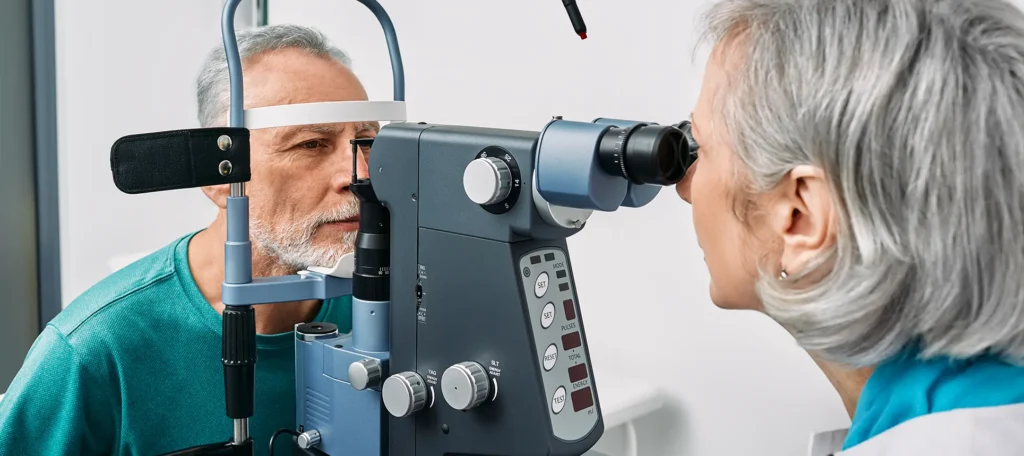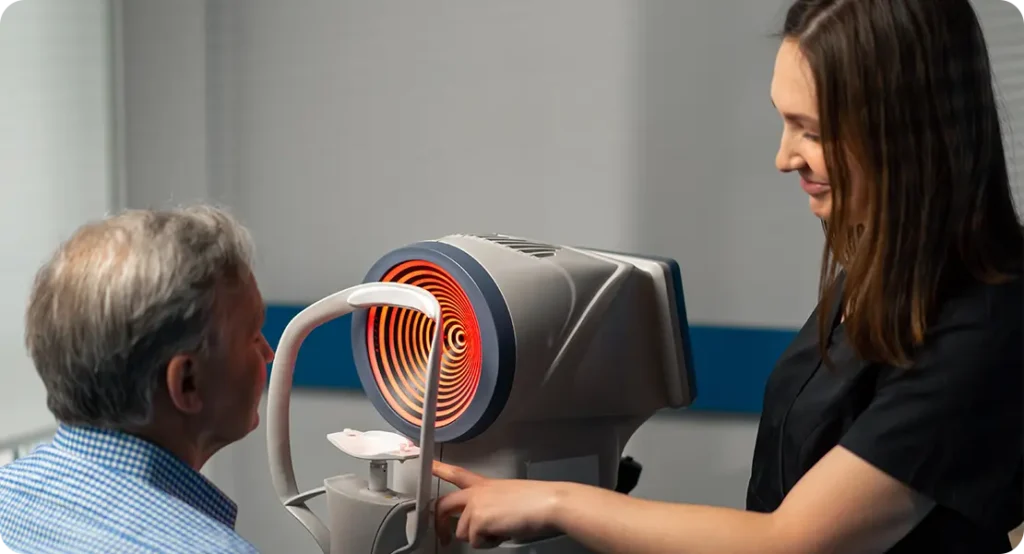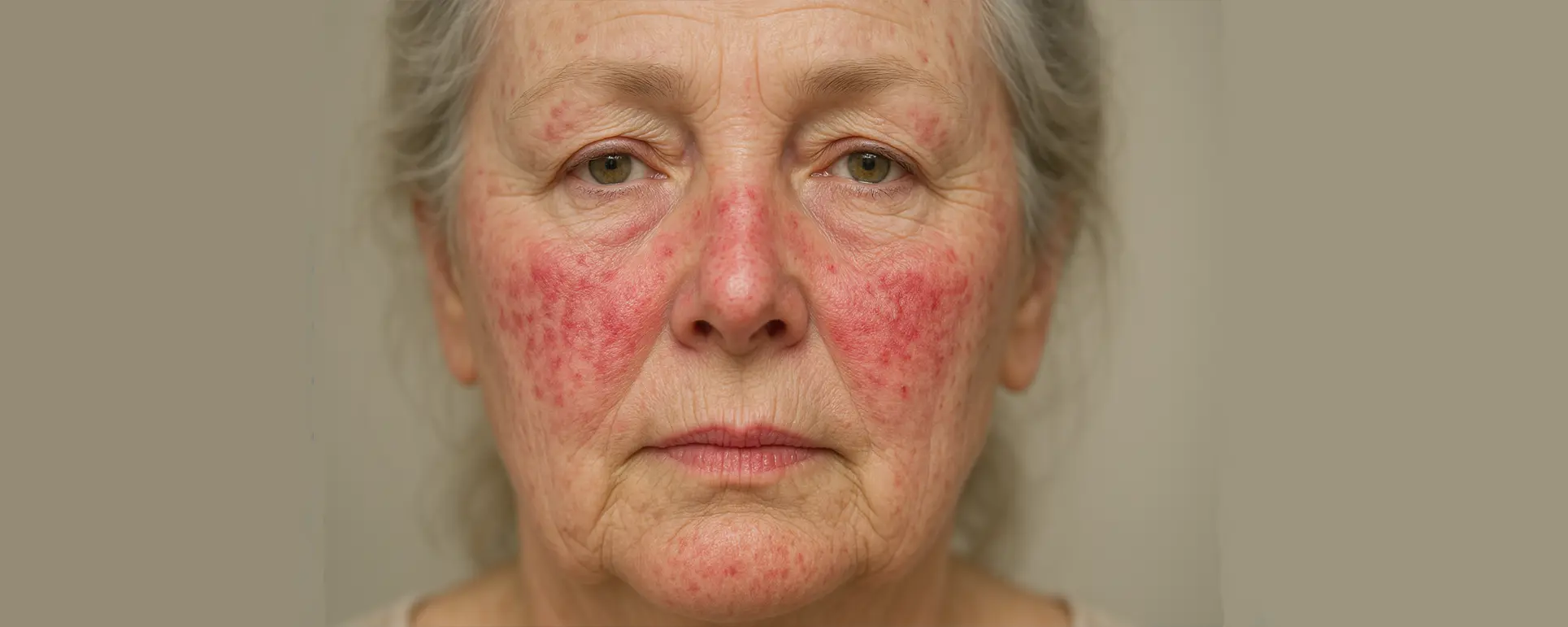If you have systemic lupus erythematosus (SLE) and are considering cataract surgery, you’re not alone in wondering how your autoimmune condition might influence the outcome. Cataracts can develop earlier and progress faster in people with SLE — often due to long-term corticosteroid use, which is a common part of managing the disease. Add to this the risk of glaucoma, immune-related inflammation, and possible retinal involvement, and it becomes clear that your eye surgeon needs to take a much more tailored approach to your care.
This article is here to walk you through exactly what you should expect — not just from the surgery itself, but from the whole process of planning, risk assessment, and recovery. It’s not about scaring you; it’s about empowering you with knowledge so you can ask the right questions and feel confident in your choices.
Why Cataracts Develop So Frequently in SLE
The Steroid Link
One of the most common reasons people with lupus develop cataracts is corticosteroid treatment. While steroids like prednisolone are effective in controlling inflammation, they come with well-documented side effects when used over the long term — and posterior subcapsular cataracts (PSC) are at the top of that list. These cataracts can cloud the vision more centrally and more rapidly than age-related types, often needing surgery earlier.
Long-term systemic steroid use causes protein aggregation in the lens and increases oxidative stress. The result? A loss of lens transparency, often in a younger demographic than typically seen with age-related cataracts.
Chronic Inflammation’s Role
Even without steroids, the autoimmune nature of SLE itself can increase the risk of lens opacification. Inflammatory cytokines and oxidative stress play a direct role in damaging the delicate protein structures of the lens. This makes cataract formation almost a double-edged sword for many SLE patients — with both the disease and its treatment contributing to the problem.
Photosensitivity and UV Exposure
SLE often causes photosensitivity, prompting patients to avoid sunlight. However, when patients are exposed, the added UV risk may accelerate cataract development. Protecting your eyes with high-quality sunglasses isn’t just about comfort — it’s an important step in cataract prevention for people with SLE.
Retinal Complications in Lupus: What You Need to Know Before Surgery

Chorioretinal Involvement
One of the unique ocular complications in SLE is lupus chorioretinopathy — a condition where inflammation affects the retina and choroid (the vascular layer underneath). This can result in fluid leakage, retinal detachment, or even permanent vision loss if not caught early. The trouble is, some of these conditions don’t show obvious symptoms straight away.
Before any cataract surgery is performed, your ophthalmologist will want to do a thorough retinal assessment, often using optical coherence tomography (OCT) and fluorescein angiography. This helps determine if there’s any chorioretinal activity that could flare during surgery or be masked by a dense cataract.
Lupus Retinopathy
Lupus retinopathy may cause cotton wool spots, vessel narrowing, and haemorrhages — all of which can limit vision even after a technically successful cataract operation. It’s essential to distinguish between visual loss from cataract versus that caused by retinal pathology so that you have realistic expectations post-surgery.
Antiphospholipid Syndrome and Retinal Vascular Risk
A subset of SLE patients may also have antiphospholipid syndrome (APS), which raises the risk of retinal vein or artery occlusion. This clotting tendency can impair blood supply to the retina, increasing the likelihood of poor visual outcomes if left unmanaged. Anticoagulation status must be reviewed carefully before surgery in such cases.
Managing Immunosuppression in the Perioperative Period
Should Immunosuppressants Be Stopped?
This is a common question, but the answer isn’t always straightforward. In general, most patients continue their baseline immunosuppressive therapy — such as hydroxychloroquine, azathioprine, or mycophenolate mofetil — through the cataract surgery period. These drugs help maintain disease control and prevent flares, which could otherwise increase surgical risk.
However, if you’re on stronger immunosuppressants or biologics like rituximab, your rheumatologist and surgeon might need to coordinate the timing. In some cases, it might be safer to delay elective surgery until you are in a more stable phase.
Corticosteroid Cover and Adrenal Suppression
If you’ve been on high-dose oral steroids for a long time, your body may not be producing enough cortisol naturally. This is called adrenal suppression. You may need “stress dose steroids” — usually given as intravenous hydrocortisone around the time of surgery — to help your body cope with the physiological stress of the operation. Don’t worry — this is a standard precaution your anaesthetist and surgeon will plan for.
Risk of Postoperative Infection
While immunosuppressive therapy is essential to control SLE, it does increase your risk of postoperative infections, including endophthalmitis — a rare but serious intraocular infection. This is why you’ll be given antibiotic drops before and after surgery, and sometimes even an antibiotic injection during the procedure.
Secondary Glaucoma in SLE: Another Surgical Hurdle
Steroid-Induced Ocular Hypertension
If you’re one of the many SLE patients who develop raised intraocular pressure (IOP) from steroids, this can turn into secondary open-angle glaucoma over time. Cataract surgery can actually help lower IOP in some cases, especially if the angle is open and there’s lens crowding.
However, if glaucoma has already caused optic nerve damage, your surgeon may need to adjust the surgical plan. This could include using viscoelastics that protect the nerve or combining cataract surgery with minimally invasive glaucoma surgery (MIGS).
Uveitic Glaucoma
SLE can also cause intraocular inflammation or uveitis. When inflammation clogs the trabecular meshwork (the eye’s drainage system), pressure builds up. These patients are even more prone to postoperative IOP spikes. Close monitoring with regular visual field tests and optic nerve imaging will be part of your follow-up.
Preoperative Assessment: More Than Just a Routine Check

Biometry and IOL Calculation Challenges
Because SLE can cause dry eyes and corneal surface changes — especially if you’ve had ocular involvement or secondary Sjögren’s syndrome — this can distort keratometry readings and impact the accuracy of your intraocular lens (IOL) power calculation. Your surgeon may recommend using optical biometry with repeat measurements and dry eye treatment beforehand to improve accuracy.
Fundus Examination May Be Limited
If your cataract is dense — particularly in the posterior subcapsular region — your surgeon may not get a clear view of the retina before surgery. In such cases, a B-scan ultrasound can help exclude major retinal detachment or choroidal effusion before going ahead with the procedure.
Intraoperative Modifications and Considerations
Anaesthetic Planning
Depending on your overall health, general anaesthesia may sometimes be considered — especially if you have difficulty lying flat, are on anticoagulants, or experience severe anxiety. That said, most SLE patients can undergo cataract surgery comfortably under local anaesthetic.
Adjusting for a Fragile Eye
If you’ve had prior uveitis or high-dose steroid use, the capsule that holds your natural lens can be more fragile than usual. Your surgeon might use a capsular tension ring (CTR) to stabilise the lens during surgery. This ensures proper centration of the new IOL and helps avoid post-op lens dislocation.
Postoperative Care and Follow-Up
Delayed Healing and Inflammation Risk
SLE can interfere with the normal healing process. Your eye might take a bit longer to feel fully comfortable, and inflammation can linger. That’s why topical steroid drops — along with anti-inflammatory non-steroidals — are usually prescribed for a longer duration.
It’s vital to attend all follow-up appointments, especially during the first month after surgery, so any early signs of inflammation, IOP spike, or infection can be addressed promptly.
Long-Term Visual Outlook
The good news is that many people with SLE achieve excellent visual outcomes after cataract surgery — particularly if their retina and optic nerve are healthy. If there’s been retinal involvement or long-term glaucoma damage, your vision may still improve, but perhaps not to 20/20. Your surgeon will go through these expectations with you beforehand.
Talking to Your Surgical Team: Questions to Ask

Before moving forward with surgery, it’s a good idea to discuss the following with your ophthalmologist:
- Has my retina been fully assessed?
- Are my immunosuppressants safe to continue?
- Do I need stress-dose steroids?
- Is there any evidence of glaucoma or uveitis?
- How accurate are my IOL measurements given my eye surface health?
- Will I need more post-op visits than usual?
These conversations ensure your surgeon understands your full medical history and allows for a personalised surgical plan that puts safety first.
Additional Considerations: SLE-Associated Comorbidities
- Lupus Nephritis and Anaesthesia
If your SLE has affected your kidneys (lupus nephritis), the anaesthesia plan may need to be adjusted to account for altered drug metabolism. Blood tests may be ordered to check renal function before surgery. - Cardiovascular Risk
SLE patients often have an increased risk of cardiovascular issues, especially if they’re on long-term steroids or have APS. Your surgeon may liaise with your cardiologist or GP to assess surgical risk and ensure blood pressure and clotting factors are well managed.
Frequently Asked Questions (FAQs)
- Can people with SLE have cataract surgery safely?
Yes, cataract surgery is generally safe for people with systemic lupus erythematosus (SLE), provided that the disease is well-controlled at the time of surgery and a comprehensive preoperative plan is followed. Surgeons typically coordinate with rheumatologists to ensure immunosuppressive medications are stable and any signs of active inflammation or retinal involvement are addressed. The procedure itself is not fundamentally different, but the patient’s systemic condition means the risks, healing patterns, and long-term monitoring may be more complex. With proper preparation and individualised care, outcomes can be very favourable. - Will my immunosuppressants affect healing after surgery?
Immunosuppressive medications can influence healing, mainly by slowing the inflammatory response that plays a role in tissue recovery. While this can slightly delay wound closure and increase susceptibility to infection, these medications are also essential to keep SLE in remission and prevent flares triggered by surgical stress. For most patients, continuing their regular immunosuppressants through the perioperative period is the safest course, unless there’s a specific risk that warrants modification. Your ophthalmologist will work with your medical team to strike the right balance between surgical safety and systemic disease control. - How does steroid use increase cataract risk in SLE?
Long-term corticosteroid therapy is one of the leading contributors to cataract formation in SLE, especially in the form of posterior subcapsular cataracts. These develop at the back of the lens and often interfere with reading vision and bright-light tasks more rapidly than age-related cataracts. Steroids disrupt normal lens metabolism, cause oxidative stress, and lead to protein clumping, which reduces transparency. Because many SLE patients are prescribed steroids to manage flare-ups or organ involvement, it’s common to see cataracts at a younger age and in more aggressive forms. - Can cataract surgery help reduce intraocular pressure in SLE patients with glaucoma?
Yes, in many cases, cataract surgery can help lower intraocular pressure (IOP), especially in eyes where the lens is bulky or contributing to narrow drainage angles. For SLE patients who have developed steroid-induced or uveitic glaucoma, removing the cataract may relieve some of the anatomical pressure on the eye’s outflow system. However, if significant optic nerve damage has already occurred, additional glaucoma treatment may still be necessary. Sometimes surgeons opt to combine cataract surgery with minimally invasive glaucoma surgery (MIGS) for added pressure control. - What if I have lupus-related retinal disease?
Lupus-related retinal disease, such as chorioretinopathy or lupus retinopathy, can limit visual recovery even after technically successful cataract surgery. These conditions can cause fluid leakage, haemorrhages, or ischaemia at the back of the eye, and they may not fully reverse with surgery alone. This is why a detailed retinal evaluation using OCT and fundus imaging is essential before proceeding. Even if perfect clarity is not restored, removing a cataract can still significantly improve quality of life by increasing brightness and contrast, allowing better monitoring of the retina in future. - Will I need to stop anticoagulants if I have APS?
If you have antiphospholipid syndrome (APS), which is sometimes associated with SLE, you may be on long-term anticoagulation like warfarin or a DOAC (direct oral anticoagulant). In most cases, cataract surgery can be safely performed without stopping these medications, especially if the surgeon uses local anaesthesia and a micro-incision technique. However, your clotting risk and bleeding risk must be carefully reviewed by your surgeon in collaboration with your haematologist or GP. Sometimes a bridging strategy with low molecular weight heparin is used in high-risk cases, though this is rarely needed for cataract surgery alone. - Is cataract surgery more painful if I have SLE?
No, cataract surgery itself is not usually more painful for people with SLE compared to others. The procedure is typically performed under local anaesthetic, which completely numbs the eye area and prevents any discomfort during surgery. However, some patients with SLE may be more sensitive to inflammation or have dry eyes, which could cause mild irritation after the procedure. These issues are usually managed with lubricating eye drops and anti-inflammatory medications. Clear communication with your surgical team ensures any discomfort is promptly addressed and minimised. - Can I still choose a multifocal lens if I have SLE?
Multifocal lenses can be an option for people with SLE, but they aren’t suitable for everyone. If your eyes are otherwise healthy, with no significant retinal damage, optic nerve issues, or dry eye disease, a multifocal intraocular lens (IOL) may offer benefits like reduced dependence on glasses for near and distance vision. However, if you’ve had prior ocular inflammation, retinal pathology, or unstable tear film, your surgeon may recommend a monofocal lens instead. This ensures better contrast sensitivity and more predictable visual results in eyes with complex medical histories. - Will cataract surgery trigger a lupus flare?
Cataract surgery rarely triggers a lupus flare, especially if your disease is well controlled at the time of the procedure. That said, any surgical event can place stress on the body, and in susceptible individuals, this could theoretically lead to immune activation. To prevent this, doctors often ensure you’re in a stable phase before surgery and may prescribe a small boost in steroids or monitor your medications closely during recovery. Planning the operation when your disease is quiescent and avoiding any abrupt medication changes greatly reduces the likelihood of a flare. - How soon can I return to work after surgery?
Most people with SLE can return to light or sedentary work within a few days to a week after cataract surgery, depending on their recovery and overall health. If your job involves physical exertion, exposure to dust or water, or long hours of screen time, your surgeon may advise a slightly longer break. Since healing may take a bit longer in immunosuppressed patients, attending all follow-up appointments is crucial to ensure there are no complications. Your return to work should be guided by how comfortable you feel and the nature of your role.
Final Thoughts: You Can Still Have Great Results
Cataract surgery in the setting of systemic lupus erythematosus is undoubtedly more complex — but that doesn’t mean your vision has to suffer. With the right planning, coordination between specialists, and attention to detail, the outcomes can be just as good as they are for anyone else.
At London Cataract Centre, we take a multidisciplinary approach to each SLE case, working closely with rheumatologists and tailoring every step of the process to your individual needs. Whether you’re managing high-dose steroids, retinal risks, or autoimmune complications, we’re here to make the journey smoother for you.
References
- Petri, M., Orbai, A.M., Alarcón, G.S., Gordon, C., Merrill, J.T., Fortin, P.R., et al. (2012) ‘Derivation and validation of the Systemic Lupus International Collaborating Clinics classification criteria for systemic lupus erythematosus’, Arthritis & Rheumatism, 64(8), pp. 2677–2686. Available at: https://www.ncbi.nlm.nih.gov/pmc/articles/PMC3409311/ (Accessed: 1 July 2025).
- Jabs, D.A., Nussenblatt, R.B. and Rosenbaum, J.T. (2005) ‘Standardization of uveitis nomenclature for reporting clinical data: results of the First International Workshop’, American Journal of Ophthalmology, 140(3), pp. 509–516. Available at: https://pubmed.ncbi.nlm.nih.gov/16196117/ (Accessed: 1 July 2025).
- Kadayifcilar, S., Eldem, B. and Tugal‑Tutkun, I. (2001) ‘Lupus choroidopathy: the role of systemic corticosteroid therapy’, Ocular Immunology and Inflammation, 9(3), pp. 187–192. Available at: https://pubmed.ncbi.nlm.nih.gov/12782171/ (Accessed: 1 July 2025).
- (2021) ‘Choroidal involvement in systemic vasculitis: a systematic review’, Journal of Ophthalmic Inflammation & Infection, [online], Published ~3.2 years ago, accessible via PMC. Available at: https://www.ncbi.nlm.nih.gov/pmc/articles/PMC8980189/ (Accessed: 1 July 2025).

